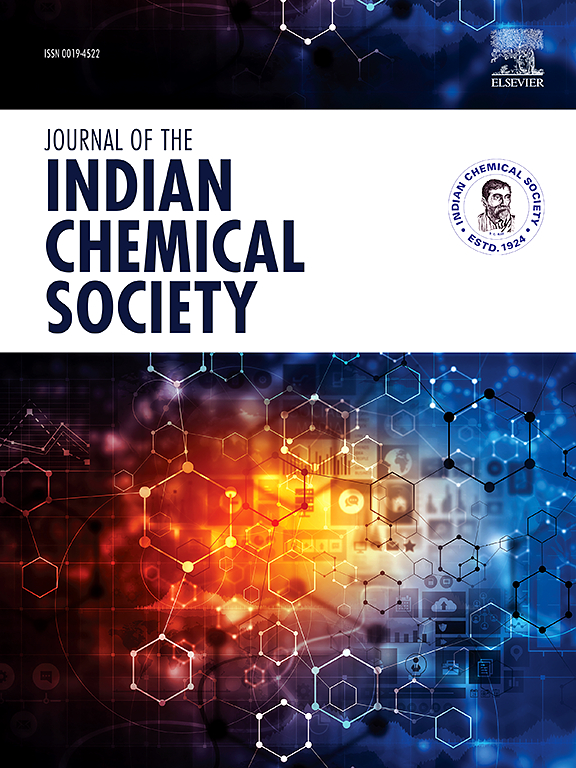利用从炼油厂分离的蜡样芽孢杆菌对纺织废水进行生物修复:游离和固定细胞系统的比较分析
IF 3.2
4区 化学
Q2 CHEMISTRY, MULTIDISCIPLINARY
引用次数: 0
摘要
纺织工业消耗大量淡水,并向环境排放未经处理或半处理的污染物。纺织制造业通常使用的偶氮染料会对生态系统造成危害。含有偶氮染料的废水未经完全处理就排入水生系统,具有难降解性和毒性。因此,必须采用具有成本效益和高性能的技术。在这方面,细菌降解被认为是处理活性蓝(AB)染料的一种经济可行的高效技术。聚氨酯泡沫(PUF)是一种具有微孔结构的低成本亲水性材料,具有出色的表面体积比。因此,聚氨酯泡沫是固定分离细菌的首选材料。为此,我们从石油污泥中分离出了一种降解染料的革兰氏阳性细菌,即蜡样芽孢杆菌 GS2 IIT (BHU)。通过改变工艺参数,即间歇时间、pH 值、温度、葡萄糖浓度和初始 AB 染料浓度,对自由细胞系统和固定化细胞系统进行了比较分析。发现相应的最佳条件分别为 6.0 天、6.5、30 °C、1.0 克/升和 50 毫克/升。固定化细胞系统的染料去除率(RE)比游离细胞系统高出 10.7 %。在入口负载率为 30 mg/L d 和初始染料浓度为 50 mg/L 时,填料床生物反应器的染料去除率可达 98.56%。本文章由计算机程序翻译,如有差异,请以英文原文为准。

Bioremediation of textile wastewater using Bacillus cereus isolated from refinery site: Comparative analysis of free and immobilized cells systems
The textile industries consume a considerable amount of freshwater and discharge untreated or semi-treated pollutants to the environment. Azo dyes, generally employed in textile manufacturing industries, have a hazardous impact on the ecosystem. Incomplete treatment of wastewater containing azo dyes discharges into the aquatic system, which has recalcitrant and toxic properties. Hence, the need for cost-effective and high-performing technologies is essential. In this direction, bacterial degradation is considered an economically viable and efficient technique for the treatment of Active blue (AB) dye. Polyurethane foam (PUF) is a low-cost and hydrophilic material with a microporous structure, which offers an excellent surface-to-volume ratio. Hence, PUF was preferred for the immobilization of isolated bacterial species. For this, a dye-degrading gram-positive bacteria namely Bacillus cereus GS2 IIT (BHU) was isolated from the petroleum sludge. A comparative analysis between free and immobilized cell systems was carried out by varying the process parameters, i.e., batch time, pH, temperature, glucose concentration, and initial AB dye concentration. The corresponding optimum conditions were found to be 6.0 days, 6.5, 30 °C, 1.0 g/L, and 50 mg/L, respectively. The immobilized cell system exceeds the dye removal efficiency (RE) by 10. 7 % compared to the free cell system. The packed bed bioreactor could be able to deliver 98.56 % of dye removal at an inlet loading rate of 30 mg/L d and 50 mg/L of initial dye concentration.
求助全文
通过发布文献求助,成功后即可免费获取论文全文。
去求助
来源期刊
CiteScore
3.50
自引率
7.70%
发文量
492
审稿时长
3-8 weeks
期刊介绍:
The Journal of the Indian Chemical Society publishes original, fundamental, theorical, experimental research work of highest quality in all areas of chemistry, biochemistry, medicinal chemistry, electrochemistry, agrochemistry, chemical engineering and technology, food chemistry, environmental chemistry, etc.

 求助内容:
求助内容: 应助结果提醒方式:
应助结果提醒方式:


